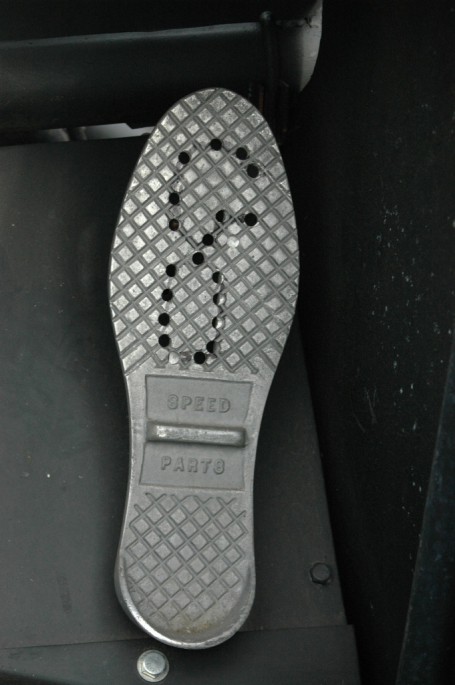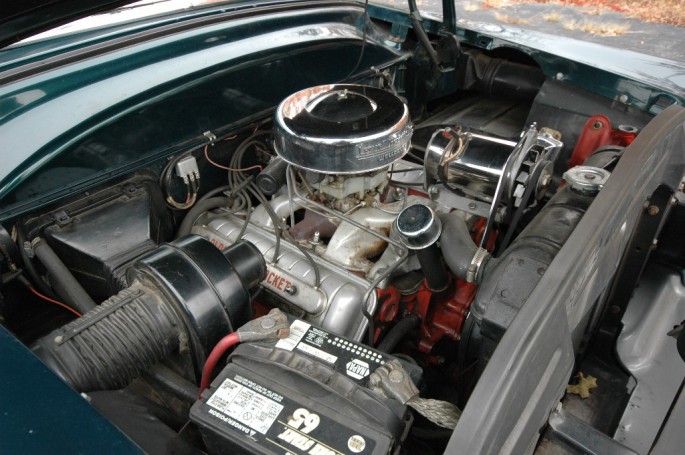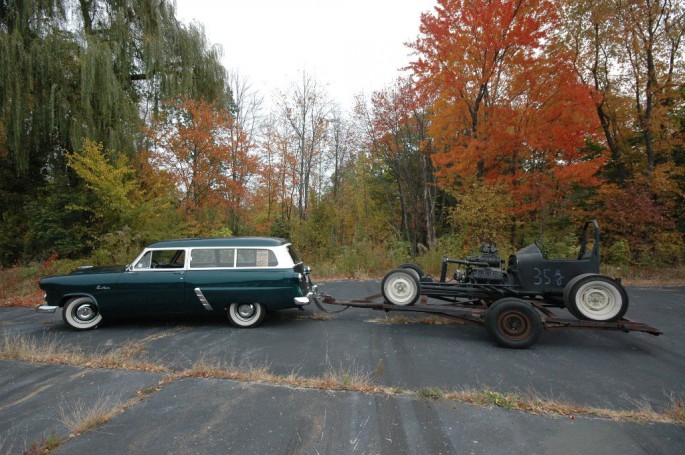(Words and Photos by Mike Bradford) – Before the days of mega speed shops, CNC machines and computers, if you wanted to build a fast car, the main source for goodies would be a local junk yard, especially if you lived on the east coast. A prime example of scrounging at its best is this exact reproduction of Fran and Ralph Bannister’s Massachusetts based high 10 second 130 mph flathead powered dragster built in 1955 for a total investment of $475.00. Paul Aldrich restores antique cars in his Leominster MA shop and spent 5 years recreating this piece of drag racing history with a lot of technical information gathered from his many visits with Mr. Bannister. Ralph worked at Raytheon which gave him access to some 3 ¼” seamless shelby tubing that worked great for the frame. The rest of the skeleton was constructed from electrical conduit and covered with the aluminum skin pirated from a WW II troop transport glider. One of the wing supports was used to link the steering box to the front axle which uses a set of rear ’36 Chevy shock absorbers. A keen eye might notice the non matching front tread patterns, good catch, a wrecked motorcycle provided the rubber which is mounted on a set of 16” ’40 Ford rims.
Out back a ’40 Ford rear axle utilizing 4:11 gears is held true by a pair of quarter elliptical leaf springs. A 1950 Lincoln provided the rims and M&H Racemaster slicks finish out the rear end equipment.
The heart of the rail is a 1948 vintage 59 AB Flathead bored to 296 cu in topped with a GMC 4/71 blower donated by a bus. With Ralph’s help, Paul recreated the supercharger, intake manifold and 4 V belt drive system which was donated by an F800 Ford oil truck. A foursome of 97 Stromberg carbs feed the beast.
Shortly after building his own induction system, Paul got a lead on the original items. “Through a friend of a friend, I learned that the supercharger, manifold, drive and carbs were somewhere in Georgia. So after a road trip to Bowling Green Kentucky then to Georgia, I had the original pieces in my possession.” The intake was custom made for the Bannister brothers by a foundry using melted pistons they provided. Paul also acquired the exact Harmon and Collins magneto that had to be extended to clear the blower drive, as was the reversed ’49 Ford water pump pulleys. Cooling chores are handled by a 1950 Henry J radiator.
The flywheel was lightened by 21 pounds and uses a solid disc clutch borrowed from an industrial wood chipper instantly linking the flathead to a 3 speed transmission filled with Zephyr gears. The 3 gallon fuel tank was originally used in a home kerosene heater and is pressurized by a Bell Automotive hand fuel pump. Inside the cockpit is a set of aircraft seat belts and the steering wheel from the previously mentioned F 800 Ford truck. Engine vitals are monitored by a Sun tachometer and a ’22 Buick oil pressure gauge. Paul also re-cast the aluminum Speed Parts gas pedal which the Bannister duo drilled the word “GO” into it.
Shortly after Paul embarked on this project in 2001, Ralph was diagnosed with leukemia, but the disease didn’t prevent him from providing a wealth of technical help and racing memories to the build. One problem that arose was at top speed Ralph would get a constant spray of fuel in his face. Due to the carb positioning, the accelerator pumps had to be removed from the back two. At 100 mph fuel would get siphoned out of the pump orifices. After diagnosing the problem, a couple of Mercury dimes held in place by the stretched accelerator spring cured things. Those dimes are still there. Ralph also recalled a vibration up front while at top speed. This condition was caused by the way the axle was lightened. Usually a bunch of holes are drilled for that purpose, but the Bannister boys removed the middle material across the whole width, leaving the top and bottom rails. This created a condition where a bad harmonic vibration would occur. After figuring out this one, a track cure was to drive a socket between the beams on each side of the axle. Back home a couple pieces of steel were welded in.
Ralph was 82 years old when he lost his battle with leukemia in 2003, but not before once again he got to sit in the seat of his dragster at a Ty Rods event honoring him. Paul recalls, “As it got close to the banquet I put in a 41 hour bonsai and a couple all night thrashes to get the dragster ready for Ralph’s inspection, but it was well worth the effort to see the smile on his face.” While attending his funeral, Paul was approached by one of Ralph’s sons who said “You extended my dads life for several years beyond what the doctors gave him by involving him in the re-birth of his dragster.” The power of hot rodding at it’s best for sure. Paul wants to send a big thank you to Bill Thorp and the entire Carbs Car Club in Athol MA for un-earthing and displaying the frame in 1999 which was the beginning of this project.





















